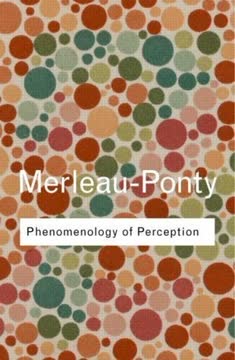Key Takeaways
1. Phenomenology returns to lived experience, beyond abstract thought.
We will find the unity of phenomenology and its true sense in ourselves.
Beyond science. Phenomenology is not a science seeking causal explanations or a philosophy building abstract systems. It's a descriptive approach that calls us back to "the things themselves," meaning our direct, lived experience of the world before scientific or philosophical interpretation. It recognizes that all knowledge, even science, is built upon this pre-reflective foundation.
Against idealism. Unlike idealist philosophies that reduce the world to a product of consciousness, phenomenology sees the world as "always already there." Reflection doesn't create the world but steps back to reveal the mystery of our connection to it. The phenomenological reduction, therefore, is not a withdrawal into pure subjectivity but a way to uncover our fundamental "being in the world."
Perpetual beginning. Phenomenology is less a fixed doctrine and more a style or movement. It's an ongoing process of questioning and rediscovering the world as it appears to us. This unfinished nature is not a flaw but inherent to its task of revealing the world's mystery.
2. Classical perception theories fail by ignoring the lived world.
The supposed evidence of sensing is not grounded upon the testimony of consciousness, but rather upon the unquestioned belief in the world.
Empiricism's flaw. Theories like empiricism define perception based on abstract notions like "sensation" as punctual impressions or isolated qualities. They assume a constant link between external stimuli and simple perceptions, ignoring how perception is always a figure against a background, already charged with sense. This approach builds perception out of the perceived object, not the lived experience.
Intellectualism's flaw. Intellectualism, while recognizing internal relations, still relies on the idea of an objective world. It explains perception through intellectual acts like "attention" or "judgment," treating the mind as a spotlight illuminating pre-existing contents. This reduces perception to a form of scientific consciousness and fails to account for the spontaneous emergence of meaning in the perceptual field.
Shared prejudice. Both empiricism and intellectualism share an "unquestioned belief in the world" as a fully determinate reality, either as a sum of external facts or as the immanent goal of knowledge. By starting from this objective world, they distort lived experience and fail to grasp the original act of perceiving.
3. Perception is a spontaneous structuring of the phenomenal field.
The perceptual “something” is always in the middle of some other thing, it always belongs to a “field.”
Beyond association. Perception is not the result of associating isolated sensations or projecting memories onto raw data. The sense of the perceived emerges directly from the configuration of the "phenomenal field." This field is not a collection of discrete elements but a dynamic whole where parts gain meaning from their relation to the whole and the context.
Motivation, not causality. The elements within the phenomenal field don't cause perception in a mechanistic way; they "motivate" it. A spectacle solicits a certain response from the perceiver, guiding attention and organizing the field. This is a form of "operative reason" or "raison d'être" that guides phenomena without being explicitly posited.
Pre-logical sense. The phenomenal field is a pre-objective domain where ambiguity is a positive phenomenon. It's a realm of "lived communication with the world" that makes it present as a familiar place. This field is prior to objective thought and requires a different kind of analysis that acknowledges its inherent sense and structure.
4. The lived body is our primary way of being in the world.
One’s own body is in the world just as the heart is in the organism: it continuously breathes life into the visible spectacle, animates it and nourishes it from within, and forms a system with it.
Beyond objectification. The body is not merely an object among others, a collection of parts in space. It resists being fully grasped as an external thing because it is "that by which there are objects." Its permanence is not factual but metaphysical, serving as the anchor for our experience of the world.
Ambiguous existence. Phenomena like the phantom limb or anosognosia reveal the body's ambiguous status. They cannot be explained by purely physiological causes or psychological representations alone. They point to an "organic thought" or "being in the world" that bridges the gap between the "psychical" and the "physiological."
Innate complex. The body functions as an "innate complex," a pre-personal adhesion to the general form of the world. It sketches out the movement of existence, providing a background of almost impersonal being around our personal life. This anonymity is both a source of freedom and servitude.
5. Motricity and habit reveal the body's intentional power in space.
Consciousness is originarily not an “I think that,” but rather an “I can.”
Spatiality of situation. The body's spatiality is not a fixed position in objective space but a "situational spatiality." It's a dynamic orientation towards tasks and possibilities, expressed through the "body schema." This schema is not a mental representation but a global awareness of our posture and powers in the world.
Motor intentionality. Movement is not merely a displacement of a physical object but an original intentionality. It's a "motor project" or "motor intentionality" that anticipates its goal and is guided by the body's understanding of the situation. This is evident in the distinction between concrete (habitual, situation-bound) and abstract (voluntary, detached) movements.
Habit as acquisition. Acquiring a habit is not forming associations or intellectual rules but a "motor acquisition of a new signification." The body "understands" the movement, incorporating it into its "world." Habit is a power to dilate our being in the world by incorporating new instruments or skills, like a blind man's cane becoming an extension of his touch.
6. The body is a natural power of expression, embodying meaning.
Speech is a genuine gesture and, just like all gestures, speech too contains its own sense.
Beyond sign and signification. The body is a site of expression where meaning is not merely represented but embodied. Sexuality, for instance, is not just a biological function but an intentionality, a way of being in the world that expresses our relation to others and our destiny.
Expression as accomplishment. The body expresses existence not as an external sign but because existence "accomplishes itself in the body." Losing one's voice (aphonia) is not just a physical symptom or a psychological state but a refusal of coexistence, a mode of being in the world.
Language as gesture. Speech is a "genuine gesture" that contains its own sense. It doesn't just translate pre-existing thought but "accomplishes thought." The meaning of words is not arbitrary but rooted in the body's power to modulate existence and create shared significations. This power is not reducible to mere convention or abstract thought.
7. Sensing is a communion, where qualities are modes of existence.
Sensation is, literally, a communion.
Quality as concretion. Sensible qualities like red or blue are not isolated impressions or indescribable states. They are "concretions of a mode of existence," presented with a motor and vital physiognomy. Sensing is a "living communication with the world" where the body synchronizes with the sensible, adopting the attitude that allows the quality to become determinate.
Coexistence, not states. Sensing is not the passive reception of external stimuli but a "coexistence" with the sensible. The sensing being and the sensible are not external terms but are enveloped in each other. The sensible solicits the body, and the body responds, but this exchange is a form of "sympathizing" or making the sensible one's own.
Prior to the senses. There is an "originary layer" of sensing prior to the division into distinct senses like sight or touch. This is a pre-personal level where experience is ambiguous and overflows the boundaries of individual senses, as seen in synesthesia. This level is characterized by a "motor and vital signification" that underlies specific sensory qualities.
8. Space is a lived dimension, not an objective container.
My body is geared into the world when my perception provides me with the most varied and the most clearly articulated spectacle possible...
Situational, not positional. Space is not a pre-existing container for objects or a system of abstract relations. It is a "situational spatiality" constituted by our bodily orientation and engagement with the world. Directions like "up" and "down" are not inherent properties of things but emerge from our body's hold on the world and its tasks.
Beyond form and content. The experience of space is prior to the distinction between form and content. It's not a matter of imposing a mental form onto sensory data but of a "gearing of the subject into his world." The "spatial level" is a certain possession of the world by the body, an anchorage point that organizes the perceived field.
Existential dimension. Depth, more than other dimensions, reveals space as "existential." It's not a relation between things but a dimension of our being situated in front of them. The perceived world is not a collection of objects in objective space but an "open ensemble of things toward which we project ourselves."
9. The perceived thing is an inexhaustible unity, rooted in bodily engagement.
The thing can never be separated from someone who perceives it; nor can it ever actually be in itself because its articulations are the very ones of our existence...
Beyond properties. The perceived thing is not a collection of stable properties or an ideal invariant. It's a "knot of living significations," a unique manner of existing where properties like color, hardness, and form express a single style. This unity is comparable to that of a work of art, where expression is inseparable from the expressed.
Norm of perception. The thing functions as a norm for perception, but not as a pre-existing law. It's the point of maturity towards which our perceptual process tends, where clarity and richness are maximized. This is not an objective standard but a norm relative to our embodied capacity for perception.
Incompleteness and reality. The world is an "open and indefinite unity," never fully constituted. This incompleteness is not a flaw but essential to its reality. The belief in the world's reality stems from the "transition synthesis" of our temporal perspectives and our bodily inherence, not from a completed intellectual grasp.
10. The problem of others highlights consciousness as embodied and situated.
Coexistence made possible by the discovery of perceptual consciousness.
Beyond solipsism. The existence of others is problematic for objective thought because it cannot reconcile the idea of a private, self-conscious subject with the perception of another subject as an external object. However, the discovery of perceptual consciousness, which is embodied and situated, allows us to understand coexistence.
Behavior as expression. The other's body is not just an object but a "behavior," a visible expression of an existence. We understand others not through analogy with our inner states but by our body's capacity to "reenact" or "sympathize" with their gestures and actions.
Intersubjective field. The world is not just a correlate of my consciousness but a shared, intersubjective field. Our perspectives slip into each other, forming a common ground. This coexistence is possible because our consciousness is not a pure, isolated entity but is fundamentally "being in the world," open to others through its very structure.
Last updated:
FAQ
1. What is Phenomenology of Perception by Maurice Merleau-Ponty about?
- Exploration of perception: The book investigates how perception is not a passive reception of sensory data but an active, embodied engagement with the world.
- Centrality of the body: Merleau-Ponty emphasizes the lived body as the primary site of experience, challenging traditional mind-body dualisms.
- Critique of classical theories: The work critiques both empiricism and intellectualism, proposing a phenomenological approach that centers on lived experience.
- Integration of philosophy and science: It draws on psychology, neurology, and philosophy to offer a comprehensive account of perception and consciousness.
2. Why should I read Phenomenology of Perception by Maurice Merleau-Ponty?
- Foundational philosophical text: The book is a landmark in twentieth-century philosophy, reshaping how we understand perception, embodiment, and consciousness.
- Interdisciplinary relevance: Its insights influence philosophy, psychology, cognitive science, and existential thought, making it valuable across disciplines.
- Challenges assumptions: Merleau-Ponty invites readers to reconsider basic assumptions about reality, self, and others by focusing on embodied, pre-reflective experience.
- Rich conceptual framework: The text introduces influential concepts such as the body schema, intentionality, and being-in-the-world.
3. What are the key concepts and takeaways from Phenomenology of Perception by Maurice Merleau-Ponty?
- Lived body (le corps propre): The body is both subject and object, structuring perception and experience as the point of view upon the world.
- Intentionality as bodily engagement: Consciousness is always directed toward something, realized through skillful bodily responsiveness rather than mental representation.
- Phenomenal field and horizon: Perception is perspectival, involving figure/ground contrasts and horizons of meaning that contextualize objects.
- Being-in-the-world: Human existence is fundamentally embedded and oriented toward the world, not detached from it.
4. How does Maurice Merleau-Ponty define the role of the body in perception in Phenomenology of Perception?
- Body as perceiving subject: The body is not just a physical object but the locus of perception and action, through which the world is experienced.
- Body schema and motricity: The body has a pre-reflective spatial and motor organization that enables perception and action without explicit thought.
- Ambiguity of the body: The body is both subject and object, a "knot of living significations" that grounds perception and cannot be fully understood as either alone.
- Phantom limb and embodiment: Phenomena like the phantom limb illustrate the body’s role in structuring experience beyond mere physical or psychological explanations.
5. How does Phenomenology of Perception by Maurice Merleau-Ponty critique traditional empiricism and intellectualism?
- Against empiricism: Merleau-Ponty rejects the idea that perception is built from isolated sensations, showing that perception is always structured as meaningful wholes.
- Against intellectualism: He challenges the view that perception is a form of judgment or intellectual interpretation imposed on sensory data, arguing for a more primordial, embodied process.
- Unquestioned belief in the world: Both traditions share a tacit belief in a world “in itself,” which distorts the understanding of perception; Merleau-Ponty seeks to overcome this by returning to lived experience.
- Phenomenology as method: He advocates for a descriptive, phenomenological approach that focuses on how things are experienced, not just how they are explained.
6. What is the "body schema" and why is it important in Phenomenology of Perception by Maurice Merleau-Ponty?
- Definition of body schema: The body schema is the lived experience of one’s own body as an active, spatially situated entity, not merely an object among others.
- Foundation for perception and action: It enables coordinated movement and perception without explicit intellectual mediation, integrating sensory and motor functions.
- Dynamic and adaptive: The body schema is not static; it adapts through habit and learning, shaping how the body inhabits the world.
- Explains phenomena like phantom limb: The persistence of the body schema even after physical loss (as in phantom limb) demonstrates its foundational role in experience.
7. How does Phenomenology of Perception by Maurice Merleau-Ponty explain intentionality and perception as embodied engagement?
- Intentionality as bodily: Intentionality is not just mental representation but the body’s direct, skillful engagement with the world.
- Perception as active and passive: Perception involves both passive sensory reception and active bodily involvement, making it a mode of being in the world.
- Pre-reflective and tacit knowledge: Much of perception is pre-reflective, involving bodily skills and dispositions that structure experience before explicit thought.
- World as meaningful field: The world is not a collection of objects but a horizon of significance shaped by bodily intentionality.
8. What is the "phenomenal field" in Phenomenology of Perception by Maurice Merleau-Ponty?
- Definition: The phenomenal field is the lived world as it appears in perception, structured by figure/ground relations, horizons, and meaningful connections.
- Not an inner world: It is not a private mental realm but the shared, intersubjective world experienced bodily and perspectivally.
- Foundation for knowledge: The phenomenal field is the ground upon which scientific and reflective knowledge build, but it cannot be fully captured by these methods.
- Dynamic and open: The phenomenal field is always open and incomplete, reflecting the ongoing nature of perception and experience.
9. How does Phenomenology of Perception by Maurice Merleau-Ponty address the relationship between perception, time, and temporality?
- Time as lived experience: Time is not an external, objective measure but a lived phenomenon that structures perception and consciousness.
- Temporal synthesis: Perception and consciousness involve the retention of the past and anticipation of the future, creating a continuous flow.
- Subjectivity as temporality: The subject is not in time but is time itself, a self-affecting flow that unites past, present, and future.
- Critique of spatialized time: Merleau-Ponty critiques views that reduce time to spatial metaphors, emphasizing its unique, dynamic character.
10. How does Phenomenology of Perception by Maurice Merleau-Ponty address the problem of subjectivity, intersubjectivity, and the perception of others?
- Tacit cogito: Merleau-Ponty introduces a pre-reflective self-awareness that grounds subjectivity without requiring full reflective transparency.
- Intersubjectivity as shared world: The perception of others is immediate and embodied, not inferential, enabling a shared world and communication grounded in bodily existence.
- Beyond analogy: Understanding others is not a reasoning by analogy but a direct perception of their embodied existence.
- Social dimension of being: Being-with-others is a constitutive aspect of human existence, not merely an external addition.
11. How does Phenomenology of Perception by Maurice Merleau-Ponty redefine freedom and choice?
- Freedom as situated: Freedom is always exercised within a given natural and social situation; it is not absolute creation but a series of engagements.
- Motivation and valuation: Choices are motivated and valued within the context of one’s embodied existence and historical situation.
- Freedom as engagement: True freedom involves commitment and taking up one’s situation, not detachment or pure spontaneity.
- Dialectic of freedom: Freedom is a dynamic interplay between being rooted in the world and transcending it, making human existence a continual project.
12. What are the best quotes from Phenomenology of Perception by Maurice Merleau-Ponty and what do they mean?
- “Man is a knot of relations, and relations alone count for man.” This highlights the fundamental relational nature of human existence, emphasizing interconnectedness with others and the world.
- “Your son is caught in the fire, you will save him... You are your act.” This illustrates that freedom and identity are realized concretely in action and commitment, not abstractly.
- “We are true right through; we carry with us... all that is necessary for transcending ourselves.” This expresses the idea that freedom and transcendence are grounded in our embodied, situated existence.
- “Philosophy has no other function than to teach us to see things anew.” Merleau-Ponty emphasizes philosophy’s role in transforming perception and understanding rather than providing definitive answers.
Review Summary
Phenomenology of Perception is a challenging but profound philosophical work exploring human perception and embodiment. Readers praise Merleau-Ponty's insights on consciousness, the body-mind connection, and our relationship to the world. The book is dense and requires careful study, but many find it rewarding and perspective-changing. Some criticize its meandering style and obscure language. Overall, it's considered a seminal text in phenomenology, challenging traditional philosophical approaches and offering a unique perspective on human experience and perception.
Similar Books
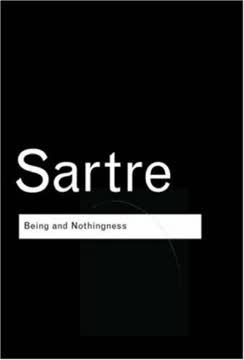


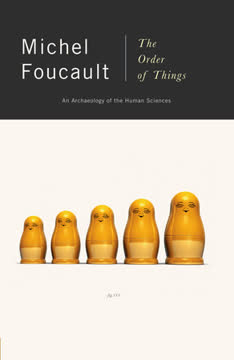
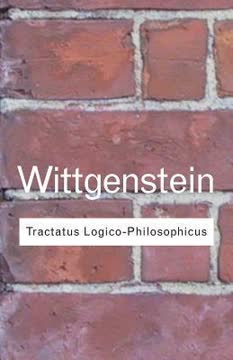
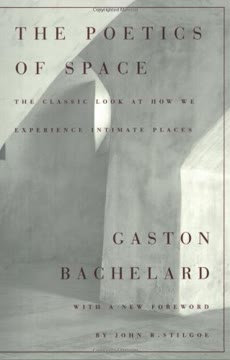

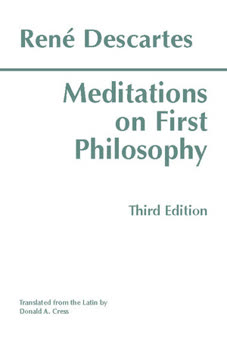
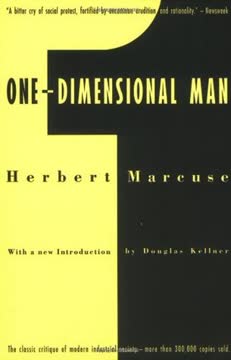
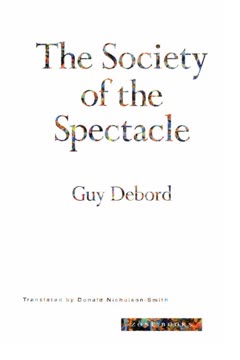
Download PDF
Download EPUB
.epub digital book format is ideal for reading ebooks on phones, tablets, and e-readers.
